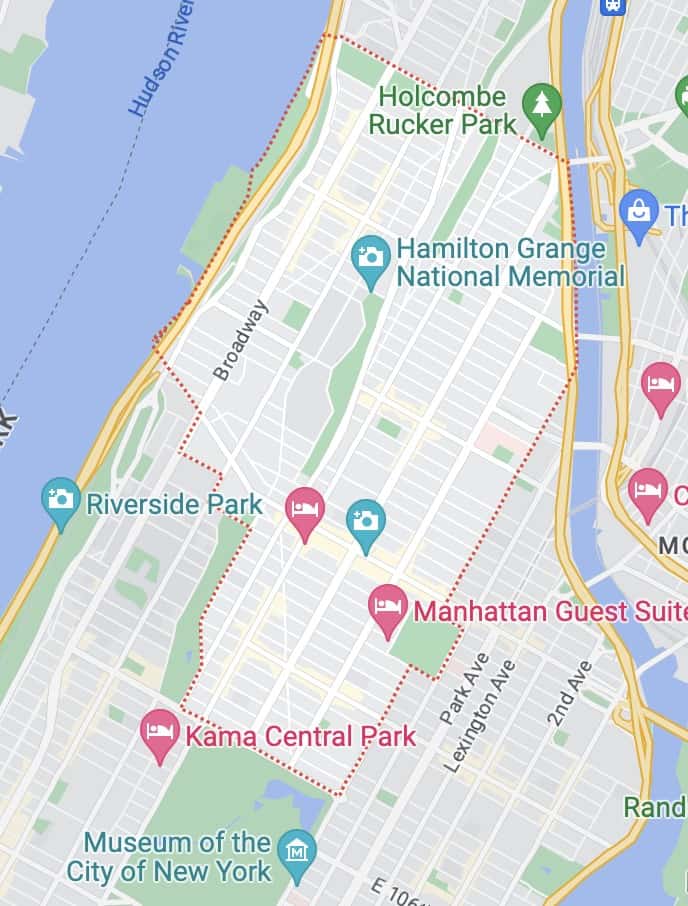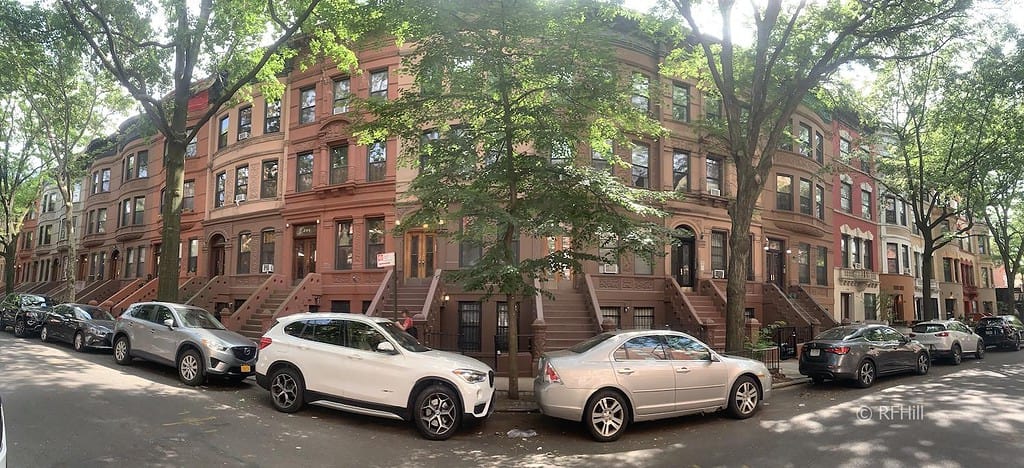I only made it to Harlem about three times while we were here, but I thoroughly enjoyed it. I took the Harlem Free Tours By Foot to make the most of it. Harlem, once the worst place in NYC, is now a must-visit destination for those seeking a taste of New York City’s diverse cultural tapestry.
A Musical Haven: Apollo Theater

Harlem Renaissance: Schomburg Center for Research in Black Culture
Immerse yourself in the intellectual and artistic movement that defined Harlem during the 1920s and ’30s, known as the Harlem Renaissance. The Schomburg Center for Research in Black Culture, located on Malcolm X Boulevard, is a treasure trove of literature, art, and historical artifacts that document the contributions of Black culture to society. Explore its vast collection of books, manuscripts, photographs, and artworks, and gain a deeper understanding of the intellectual and artistic achievements that emerged during this influential period.
Soulful Gospel: Attend a Church Service
Harlem is renowned for its soul-stirring gospel music, which roots in the neighbourhood’s vibrant religious community. Step into one of the local churches on a Sunday morning and be transported by the uplifting melodies and powerful voices that fill the air. The Abyssinian Baptist Church and the Greater Temple Baptist Church are examples of where you can experience the spiritual and musical energy that has shaped Harlem’s identity.
Culinary Delights: Explore Harlem’s Food Scene
Harlem is a food lover’s paradise, offering diverse culinary delights that reflect the neighbourhood’s multicultural heritage. Sample soul food classics like fried chicken, collard greens, and cornbread at iconic establishments like Sylvia’s or Amy Ruth’s. Indulge in Caribbean flavours at renowned spots like Red Rooster or take a culinary journey through Africa with dishes from places like La Savane or Ponty Bistro. Harlem’s dining scene is a fusion of flavours and cultures that will satisfy your taste buds and expand your culinary horizons.
Historic Landmarks: Strivers’ Row
Stroll through Harlem’s historic streets and marvel at the elegant architecture that characterizes the neighbourhood. Strivers’ Row, a collection of 19th-century townhouses on West 138th and 139th Streets, is a testament to Harlem’s rich history and a reminder of the area’s prestigious past. The beautifully preserved brownstones with intricate details provide a glimpse into the lives of Harlem’s affluent residents from decades ago.
Unwind in Nature: St. Nicholas Park and Marcus Garvey Park

Escape the bustling city streets and find tranquillity in one of Harlem’s parks. St. Nicholas Park offers stunning city skyline views, serene walking paths, and a picturesque pond. Marcus Garvey Park, named after the influential civil rights activist, features open green spaces, a playground, and the Richard Rodgers Amphitheater, where you can enjoy outdoor performances during the summer months. These parks provide the perfect oasis to relax, enjoy a picnic, or take a leisurely stroll.
The Harlem Renaissance:
The Harlem Renaissance, spanning the 1920s and ’30s, was a pivotal period in Harlem’s history. It was a time when African-American culture flourished, giving rise to groundbreaking literature, music, art, and intellectual discourse. Harlem became a beacon of creativity, attracting luminaries such as Langston Hughes, Zora Neale Hurston, Duke Ellington, and Louis Armstrong. The Harlem Renaissance celebrated black identity, challenged societal norms, and brought the world’s attention to the richness and talent of the African-American community.
The Great Migration:
During the early 20th century, Harlem experienced a massive influx of African Americans as part of the Great Migration, a movement of millions of black Americans from the rural South to northern cities. Farming was declining, and there were many manufacturing jobs in the northern industrial cities as white men went off to serve in WWI. Many who came to New York settled in Harlem, as this was one of the few places open to them.
Civil Rights and Activism:
Harlem played a crucial role in the civil rights movement of the 20th century. Activists and leaders such as Adam Clayton Powell Jr., Malcolm X, and Martin Luther King Jr. left indelible marks on the neighbourhood’s history. The Abyssinian Baptist Church, led by Powell, became a significant platform for civil rights activism and community empowerment. Malcolm X’s presence in Harlem, particularly at the Audubon Ballroom, where he delivered powerful speeches, further fueled the fight for racial equality.
Community Empowerment and Cultural Institutions:
Throughout Harlem’s history, community organizations and cultural institutions have fostered creativity, education, and social progress. The Studio Museum in Harlem, founded in 1968, has been a catalyst for showcasing the work of African-American artists and promoting dialogue around contemporary art and culture. The Schomburg Center for Research in Black Culture, established in 1925, is a world-renowned research institution dedicated to preserving and promoting the history and contributions of people of African descent.
Harlem Today:
Thanks to the cleaning up of NYC and tourism, Harlem is a major spot to visit. Popularity has gone crazy after 911, and housing prices have skyrocketed. Today, only 40% of the population is African-American, and 20% Hispanic. As Harlem continues to evolve, it remains a vibrant neighbourhood that embraces its rich history while embracing new developments and cultural expressions. Still, visitors to Harlem can immerse themselves in its thriving arts scene, experience soulful gospel music in local churches, indulge in delicious cuisine that spans a range of flavours, and witness the ongoing legacy of African-American culture.
The Financial District: History and Commerce
Fantastic Flatiron NoMad District
Times Square: The Good, The Bad and the Ugly
Exploring Manhattan’s Hidden Gems: Bryant Park and More


